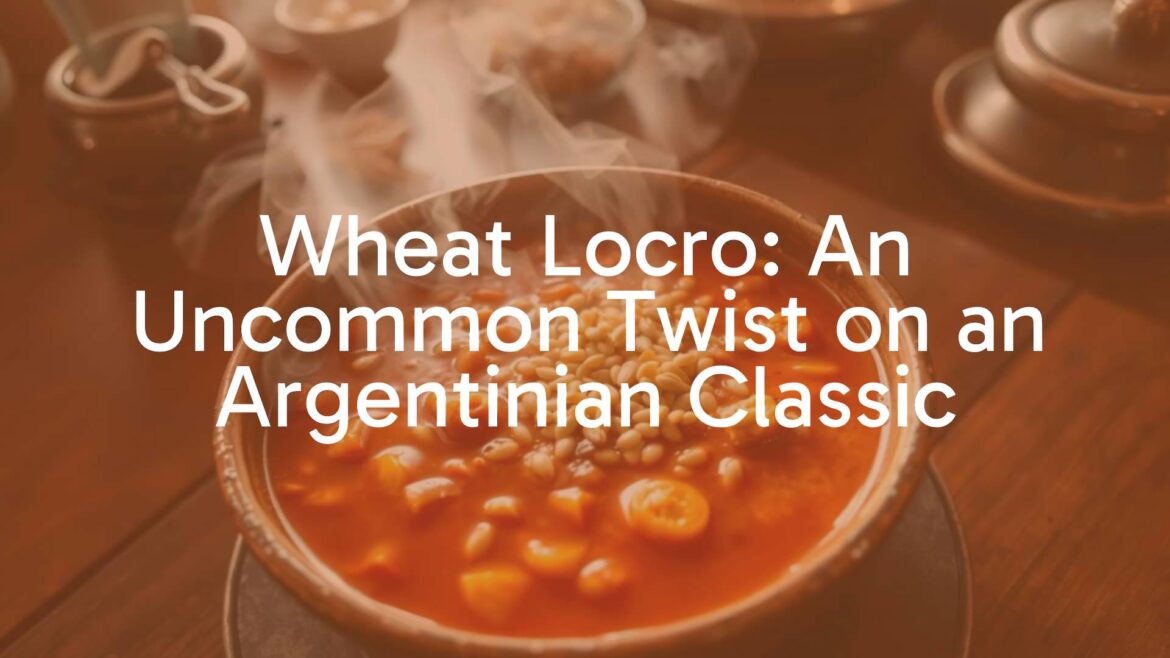Understanding Wheat Locro in Argentinian Cuisine
Wheat locro is a distinctive regional variant of Argentina’s beloved locro, a hearty stew that resonates with the nation’s agricultural and cultural heritage. While the classic locro is celebrated for its rich corn base, wheat locro introduces a unique twist by featuring wheat grains as its defining component, offering a subtle shift in both flavor and texture that sets it apart within the country’s culinary repertoire.
Historical Roots and Evolution
The origins of locro stretch back to pre-Columbian times, originating with the Andean peoples who made use of native crops like corn, potatoes, and beans. As European settlers arrived and wheat cultivation spread, rural communities, especially in the northwestern provinces of Argentina, began to adapt locro recipes by incorporating local wheat varieties. This adaptation resulted in wheat locro, a dish that underscores Argentina’s agrarian innovation and adaptability.
Ingredients and Preparation
Like its corn-based counterpart, wheat locro is defined by its base of tender wheat grains, slowly simmered alongside cuts of beef, pork (often smoked or salted), pumpkin, and a medley of vegetables such as onions, carrots, and beans. The slow-cooked amalgamation results in a thick, nourishing stew. Typical seasonings include paprika, cumin, and sometimes ají (hot pepper), giving wheat locro its depth and gentle warmth. The dish is traditionally served with a spicy quiquirimichi sauce, made from oil, paprika, and hot peppers, drizzled over the top.
Cultural Context and Social Gatherings
Wheat locro is more than just food; it’s a symbol of community and resilience. Its preparation is often reserved for national celebrations such as May Revolution Day, Independence Day, and communal gatherings, where large pots are cooked over open fires and shared among friends, families, or even entire neighborhoods. The sharing of locro, wheat-based or otherwise, remains a cherished ritual, embodying the values of togetherness and generosity central to Argentine society.
Regional Variations and Curiosities
Though less prevalent than traditional corn locro, wheat locro has carved out a place in regions such as Tucumán, Salta, and Catamarca, where wheat cultivation has historical roots. Each locality may feature subtle differences—some emphasizing spicier broths, others preferring additional legumes or local produce. Beyond Argentina, similar wheat-based stews can also be found in parts of Bolivia and Peru, reflecting shared Andean culinary traditions.
Interesting Facts About Wheat Locro
- Locros featuring wheat were sometimes seen as humble variations intended to stretch larder staples through cold winters.
- The slow-cooking process is considered essential; locals often say the longer it simmers, the better it tastes.
- It is common for home cooks to add regional twists, such as smoked meats or specific native spices, offering each pot of wheat locro a distinctive identity.
A Hearty Expression of Argentinian Culture
While it may not enjoy the same widespread fame as corn-based locro, wheat locro stands as a testament to Argentina’s ability to blend history, agriculture, and communal spirit in a single, warming bowl. Whether savored in the highlands or brought to urban tables during national festivities, it remains a flavorful and symbolic reminder of Argentina’s rich culinary heritage and regional diversity.


